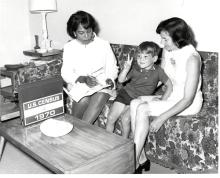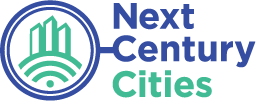
Fast, affordable Internet access for all.

Every decade, the U.S. counts itself to learn more about the people who make up the fabric of America. The upcoming census of 2020 will be the first census conducted mostly online and, while the prospect is an exciting statement about our technology, there are new risks that accompany innovation. Not everyone has reliable Internet access, which can lead to undercounts. Next Century Cities recently released the 2020 Census Kiosk Toolkit, a resource to help local communities and their citizens ensure results are accurate by establishing a public kiosk program.
Why Does It Matter?
The United States Census Bureau seeks a count of all people living in the U.S. states and territories in order to establish how to distribute federal funding. Dollars for education, infrastructure, healthcare, and other programs are determined based on population and need. When local communities and states come in with counts that don't reflect reality, they don't receive a correct amount of funding. This is especially a problem when large percentages of the population aren't counted.
Census data also determines representation in government. The number of seats in the House of Representatives, and congressional and state legislative district borders are determined based on census results. Local community leadership uses census data to help shape policy, planning, and how to distribute resources.
 As one can expect, counting every person in the United States is a monumental task that requires cooperation at every level. In the past, census takers travelled door-to-door and paper ballots were mailed to households. This year, however, much of the data will be collected online in an effort to cut costs and expedite the process.
As one can expect, counting every person in the United States is a monumental task that requires cooperation at every level. In the past, census takers travelled door-to-door and paper ballots were mailed to households. This year, however, much of the data will be collected online in an effort to cut costs and expedite the process.
A Community-Minded Approach for Better Data Collection
Next Century Cities' Kiosk Toolkit offers some great advice and resources to local governments who want to improve the chances that every person in their community is included in the census. The organization, developed to help local communities with broadband and related issues, points out that current local resources can contribute to data collection...:
Local governments are well positioned to work with stakeholders and implement programs to encourage online census responses. Local leaders should make a point of engaging with groups that are already doing work to address digital access and literacy, such as libraries. Organizations such as these often have resources in place to help, and are engaged with communities that would most benefit.
Municipalities can consider working with Internet service providers to make public Internet access temporarily available to help individuals respond to the census online. Some nonprofits are already working to make hotspots available for this purpose.
...and that a new approach can help make the census available to everyone:
Local governments can also implement programs to make public devices, or “kiosks,” available for online census participation. Deploying Internet-connected kiosks in public places across the community can help remove barriers to participating in the census online, such as access to a device or a home Internet connection. Public kiosks also make it easy for people to complete the census in places that they already spend time, such as in line at the post office or in the library.
The toolkit examines existing kiosk models in Los Angeles and Santa Clara Counties and looks at what features local administrators have implemented.
The city and county of Los Angeles are deploying Census Action Kiosks that residents can use to complete the census. The kiosks are existing Internet-connected computers or tablets that will be set to display the Census Bureau’s website, and are being deployed in city and county buildings and in partner locations across the region. The city itself is deploying about 200 kiosks, and is estimating that 900 will be deployed across the county in total. The kiosks are scheduled to become available in mid-March 2020.
Santa Clara County is renting over 100 tablets with the specific purpose of deploying them as census participation kiosks. The tablets will be locked so that they can only access the Census Bureau’s page, and will be deployed at key community organizations’ locations throughout the county, such as at libraries and senior centers.
The toolkit considers important dates for program success, outreach strategies, what types of devices will be required, features of spaces where kiosks are located, staffing, documenting and mapping of the kiosk locations, security, and provides multiple resources for these and other elements.
Next Century Cities' Kiosk Toolkit provides templates for communications so local officials can spread the word about the kiosks. There are also suggestions for events, graphics to use, and links to other organizations' resources to help with the census in your community.
Bookmark the toolkit. Even if your community won't be using kiosks to help count every citizen, having many resources on census information in one place will help answer your questions.
For more on the census, watch this brief video:
Image of family taking part of the 1970 census from US Census Bureau [Public domain]
